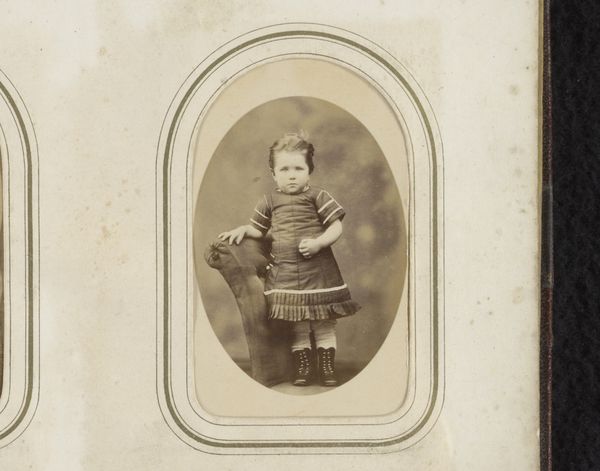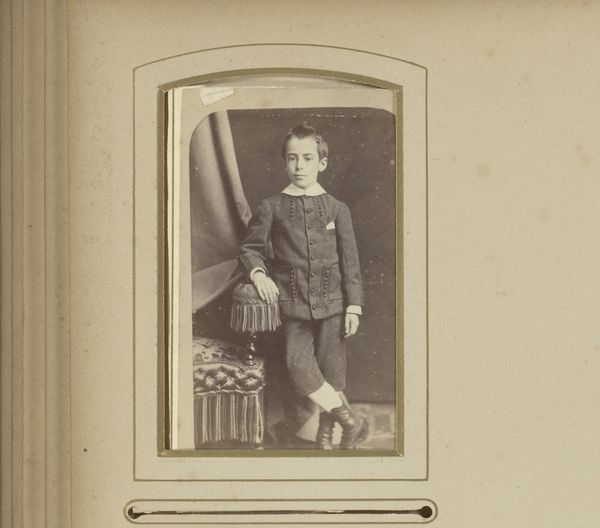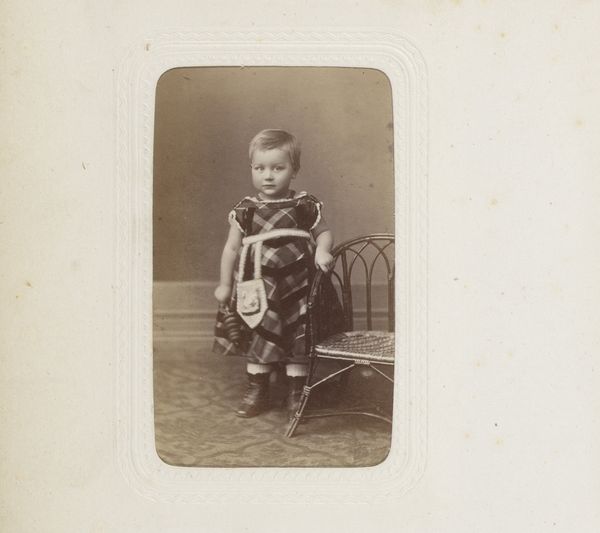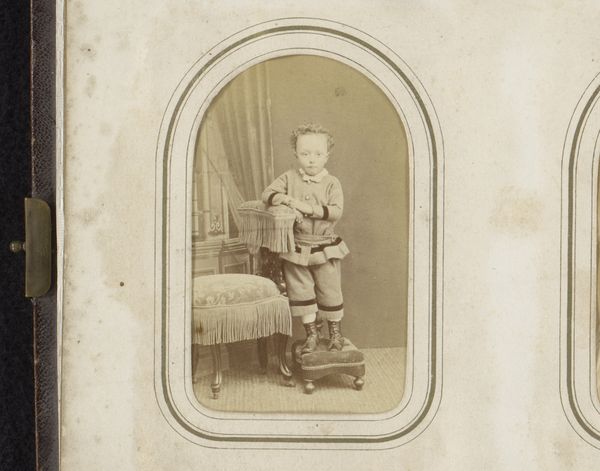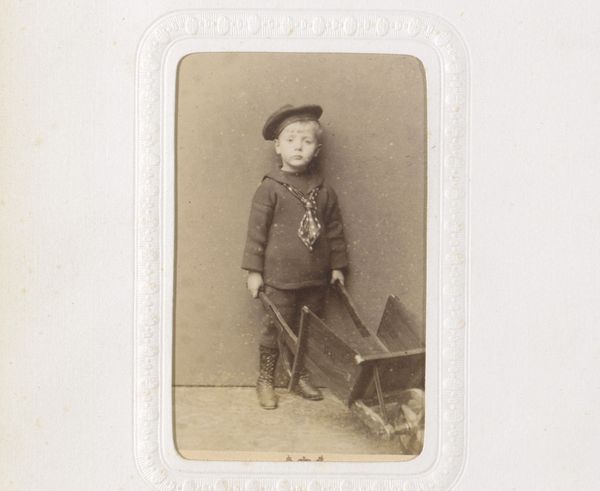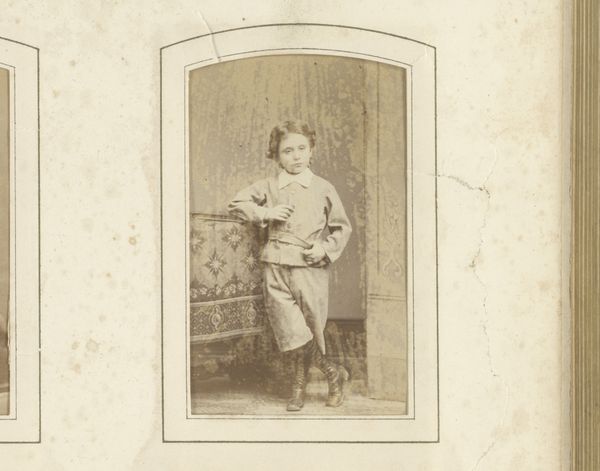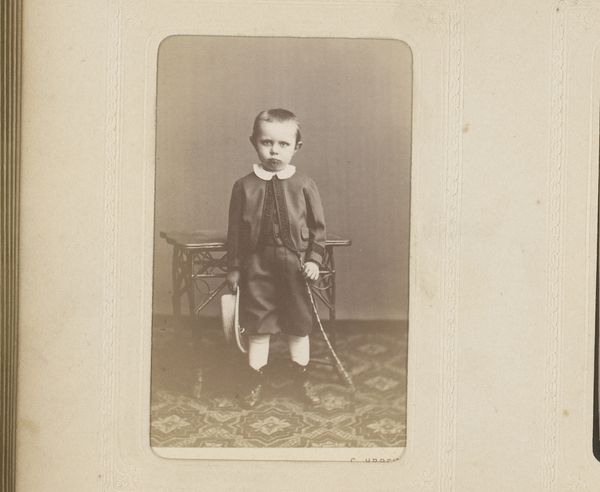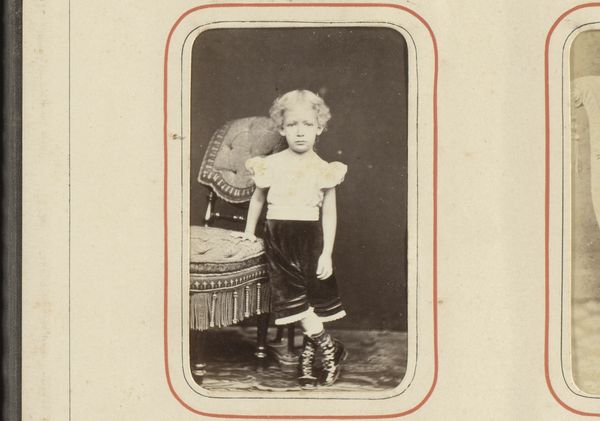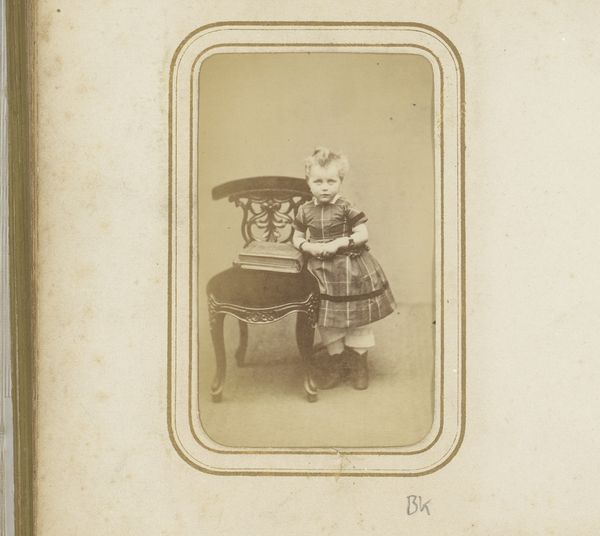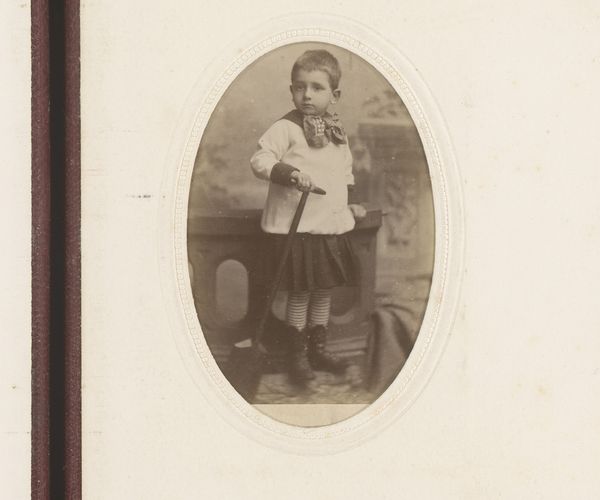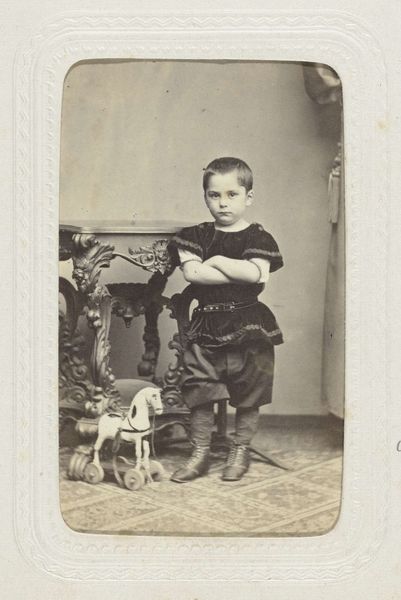
Portret van een staande jongen met hoed in de hand, leunend op een bidstoel 1877 - 1900
0:00
0:00
photography
#
portrait
#
impressionism
#
photography
#
historical photography
#
historical fashion
#
19th century
#
genre-painting
Dimensions: height 85 mm, width 52 mm
Copyright: Rijks Museum: Open Domain
Curator: Here we have a photograph titled, "Portret van een staande jongen met hoed in de hand, leunend op een bidstoel," placing its creation somewhere between 1877 and 1900. The photographer is Jannis Jacobus van Melle. Editor: It has a rather solemn feel, doesn't it? The boy looks quite serious, and the sepia tone adds to that sense of Victorian formality, even if the pose is slightly casual. The lighting definitely calls to mind certain portrait paintings of the time. Curator: Absolutely. Consider the materials: the photograph itself, printed and preserved. The clothing he wears, that ubiquitous sailor suit, speaks to industrialized production, and its social prominence reflects Victorian society's emphasis on childhood innocence. How did the industrial production impact photographic portraits, making it a widespread phenomenon and creating a new market and access? Editor: Good point. I’m thinking about how photography democratized portraiture. Suddenly, having your image captured wasn’t just for the elite; even children like this could be subjects of visual documentation. I wonder about the location, though. The description references a "bidstoel," which hints at religion's influence, or perhaps piety being purposefully constructed. What statement does that add to the photograph? Curator: Or is the chair purely a prop, conveniently sourced, like the backdrop. It may reveal insight into studio staging and the means by which desired societal meanings were carefully layered within portraiture practices. What narratives are shaped through consumption of such portraits within family albums and public displays? How is status displayed? Editor: Interesting questions. It really forces us to confront how easily we consume historical imagery. The boy's pose also gets me. He's resting his arm but simultaneously holding the hat which strikes me as slightly unnatural. It highlights, perhaps, how constructed and carefully posed studio portraits often were. Curator: Exactly! By examining photography’s process we can challenge high-art centric histories. This seemingly simple photo, becomes a tool to examine consumption, materiality, and social status during industrial era shifts in image production. Editor: Indeed. Understanding the historical forces at play allows us to understand better how those continue to shape how and what art gets made.
Comments
No comments
Be the first to comment and join the conversation on the ultimate creative platform.
